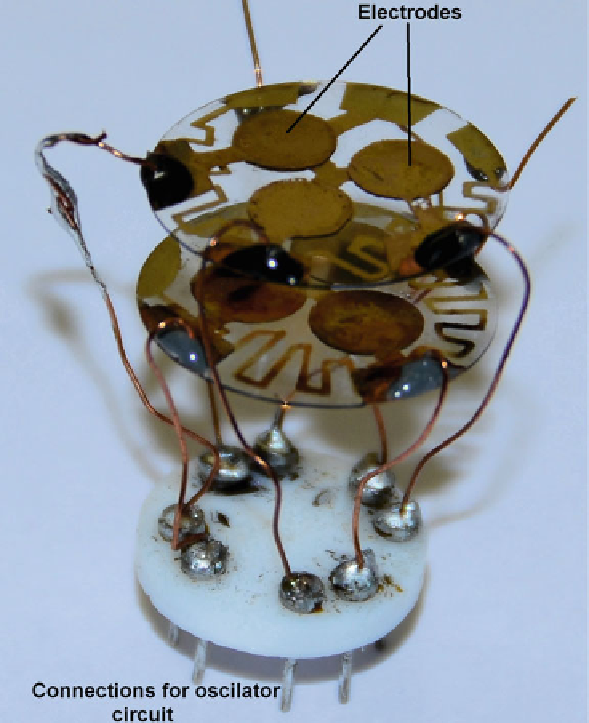Biomedical Engineering Reference
In-Depth Information
Fig. 7 QCM arrays consisting of six MIP-coated electrodes
vigorous reactions with ozone and OH in the troposphere. The respective MIPs for
the analytes are accessible via non-covalent imprinting into polystyrene-divinyl
benzene copolymers. The final sensor system exhibits isomeric selectivity and
detection limits below 20 ppm in air, as can be seen in Fig.
8
. A comparison of
the sensor array data with GC-MS results for emanations from fresh basil showed a
perfect correlation between the two data sets (Fig.
8
).
Another approach toward an MIP-based mass-sensitive sensor for terpenes was
reported by Percival et al. [
46
], who templated poly-(ethylene glycol
dimethacrylate)-co-methacrylic acid with
D
- and
L
-menthol for detection in the
liquid phase. Although probably not of “practical use” in real-life measurements
yet, the paper very impressively shows the abilities of MIP: First, the QCM sensor
could distinguish between the two enantiomers
D
-menthol and
L
-menthol, and
secondly it featured a detection limit of 200 ppb for
L
-menthol in water. One reason

Search WWH ::

Custom Search